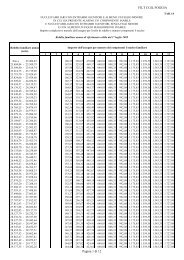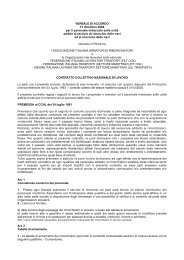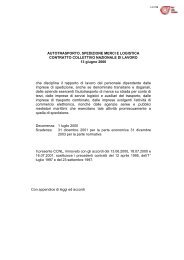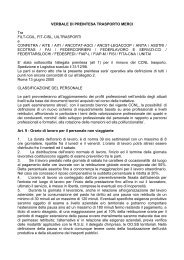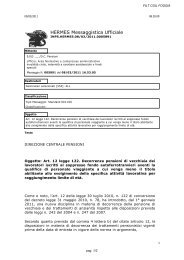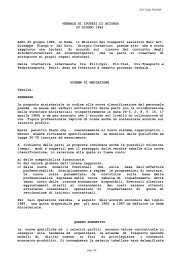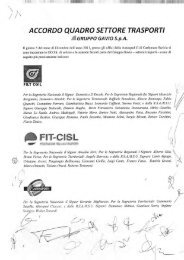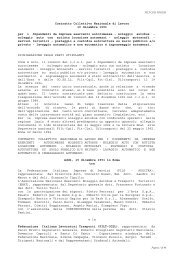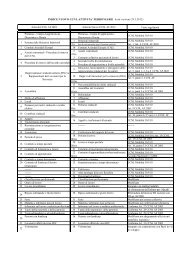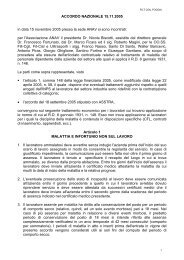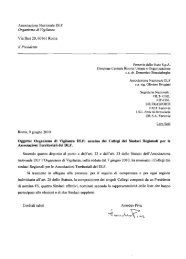Outlook for Air Transport to the Year 2025 - FILT CGIL Foggia
Outlook for Air Transport to the Year 2025 - FILT CGIL Foggia
Outlook for Air Transport to the Year 2025 - FILT CGIL Foggia
- No tags were found...
Create successful ePaper yourself
Turn your PDF publications into a flip-book with our unique Google optimized e-Paper software.
Chapter 2. <strong>Air</strong> <strong>Transport</strong> Trends and Challenges 111512Passengers carriedPer cent96<strong>Air</strong>craft kilometres3<strong>Air</strong>craft departures01960 65 70 75 80 85 90 95 2000 2005Source: ICAO Reporting Form A.Note.— 5-year moving average of annual growth. Excluding operations of airlines registered in <strong>the</strong>Commonwealth of Independent States (CIS).Figure 2-5. Growth in passengers and aircraft movements — World (1960–2005)(Total scheduled operations)FLEET COMPOSITION AND PRODUCTIVITY16. At <strong>the</strong> end of 2005, <strong>the</strong> scheduled and non-scheduled carriers of ICAO Contracting States had acombined fleet of about 22 130 aircraft of over 9 <strong>to</strong>nnes (t) maximum take-off mass (MTOM) <strong>for</strong> <strong>the</strong>irinternational and domestic operations. This is more than double <strong>the</strong> 1985 fleet. The number of jet aircraft at <strong>the</strong>end of 2005 was some 18 240, which is also more than two and a half times <strong>the</strong> corresponding 1985 fleet. Jetaircraft obviously account <strong>for</strong> an even larger proportion of carriers’ fleet capacity than indicated by <strong>the</strong> relativenumber of aircraft. Figure 2-6 contrasts <strong>the</strong> steep upward trend in <strong>the</strong> number of jet aircraft since 1960 with <strong>the</strong>slow growth in <strong>the</strong> number of turboprop aircraft and <strong>the</strong> decline in pis<strong>to</strong>n-engine aircraft.17. The progressive absorption of advanced aerospace technology in<strong>to</strong> airline fleets has been a major sourceof productivity improvement <strong>for</strong> <strong>the</strong> airline industry, as measured by <strong>the</strong> quantity of output per unit of input. Asingle reliable measure of productivity requires comprehensive measures of output and input. For <strong>the</strong> airlineindustry, TKP, including both passenger and freight traffic, is a measure of aggregate output. However, <strong>the</strong>measurement of productivity is complicated by <strong>the</strong> diversity of inputs, which include aircraft, labour and fuel,among o<strong>the</strong>r resources, and also by <strong>the</strong> complexity of <strong>the</strong> production process. Several partial productivitymeasures <strong>for</strong> <strong>the</strong> aggregated operations of international scheduled airlines are shown in Table 2-3. <strong>Air</strong>craftproductivity refers <strong>to</strong> <strong>the</strong> quantity of TKPs that are obtained from <strong>the</strong> <strong>to</strong>tal payload of <strong>the</strong> scheduled airline fleet.Improvements in <strong>the</strong> average load fac<strong>to</strong>r (<strong>the</strong> percentage of <strong>the</strong> capacity provided by aircraft flights that isoccupied with revenue-earning passengers and freight), aircraft speed, and aircraft utilization (<strong>the</strong> extent <strong>to</strong> which





